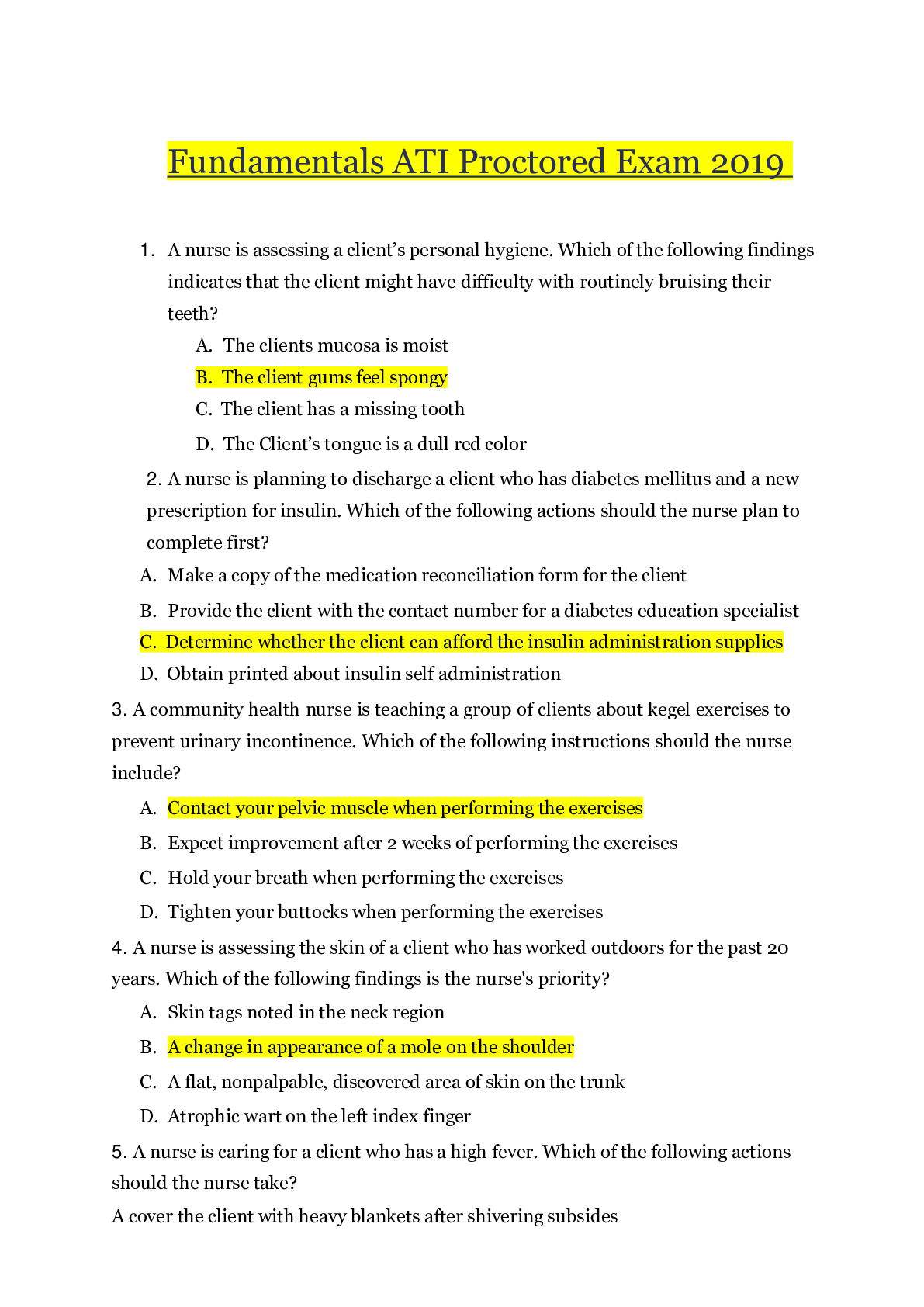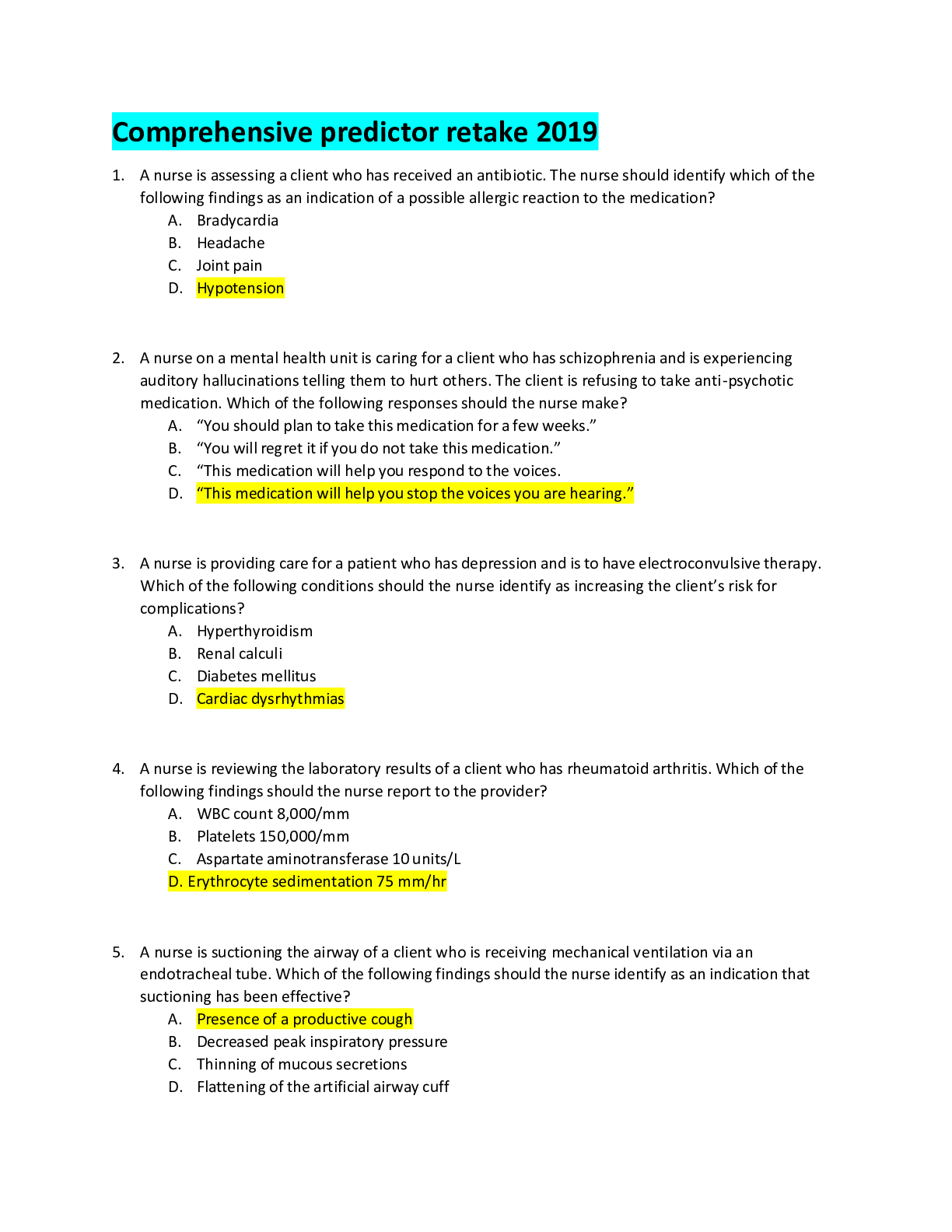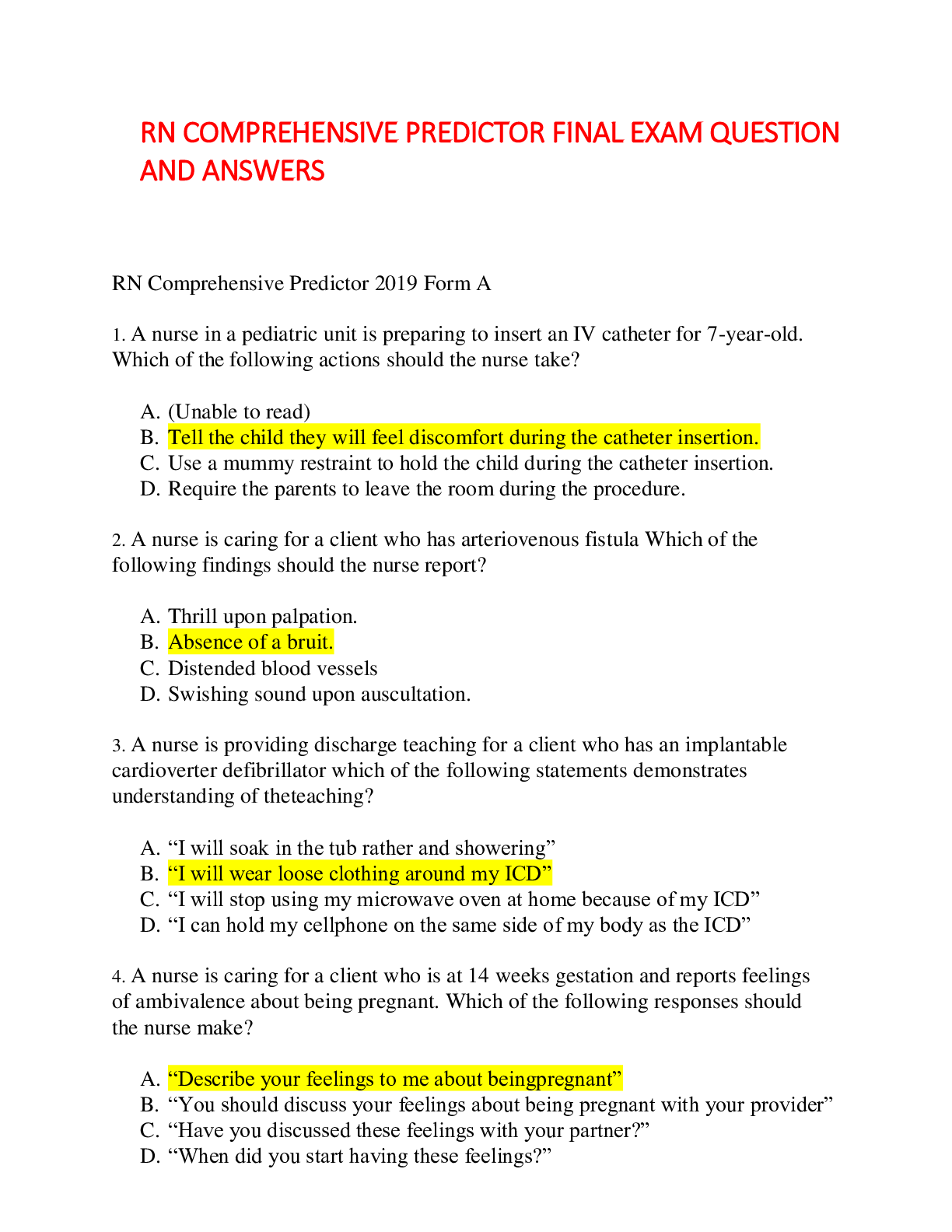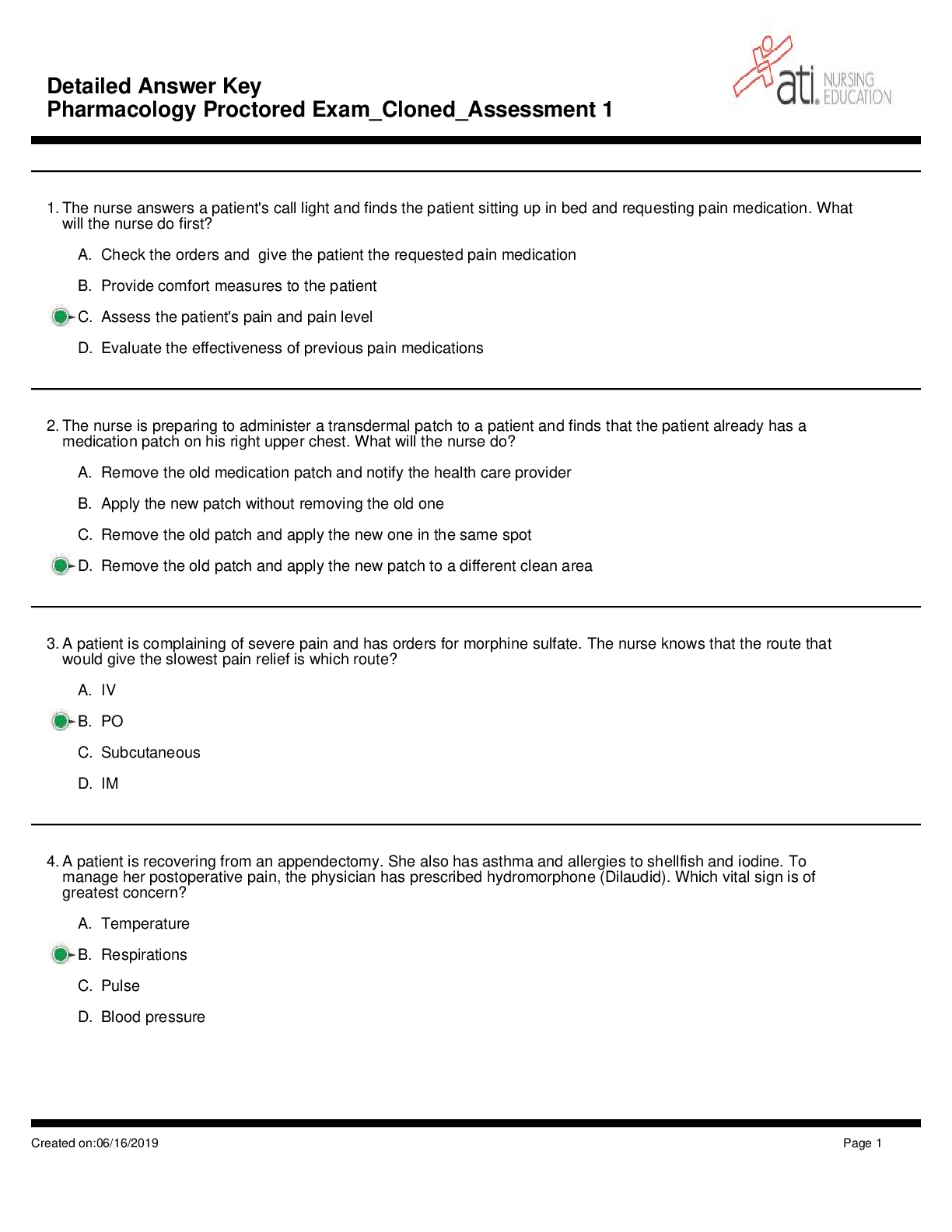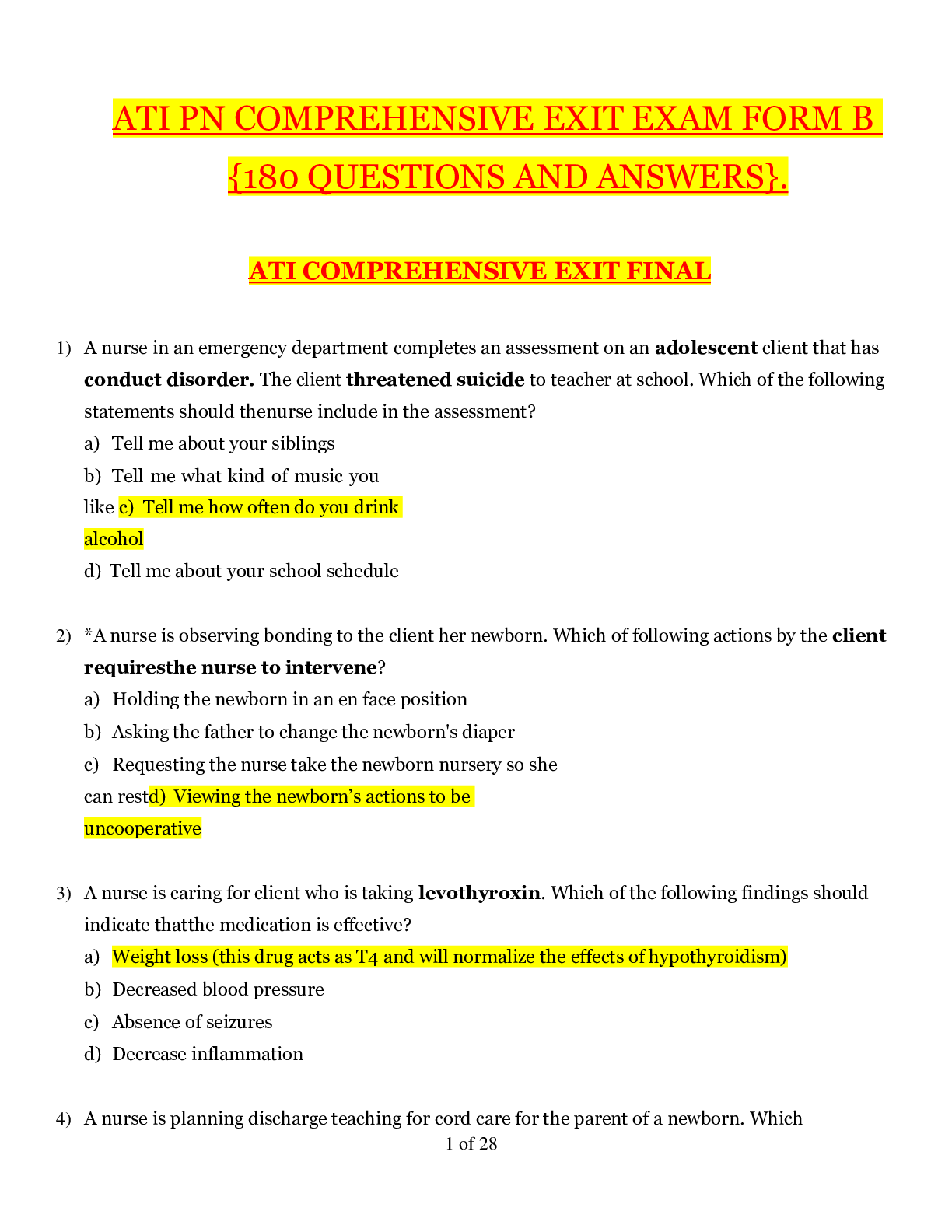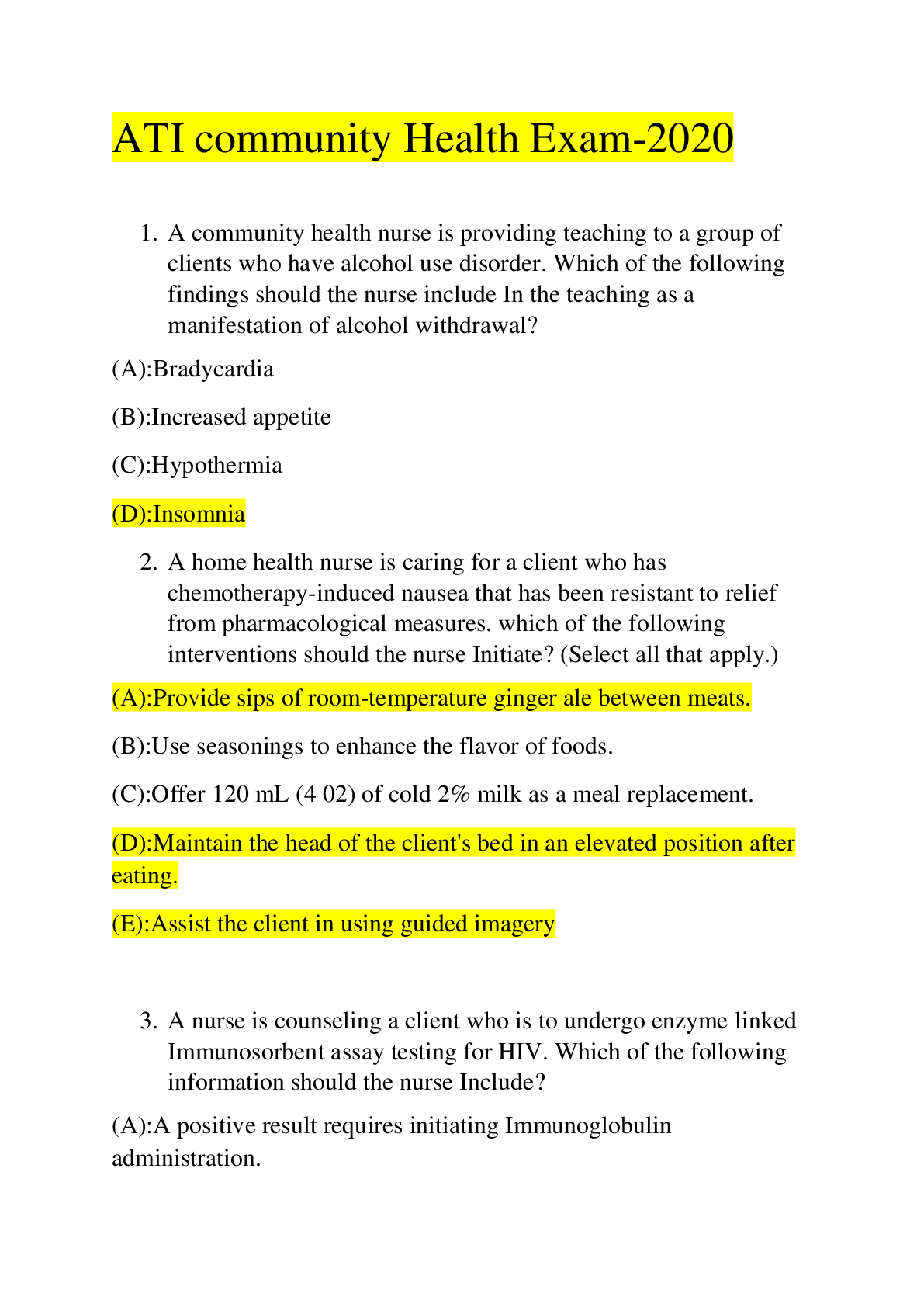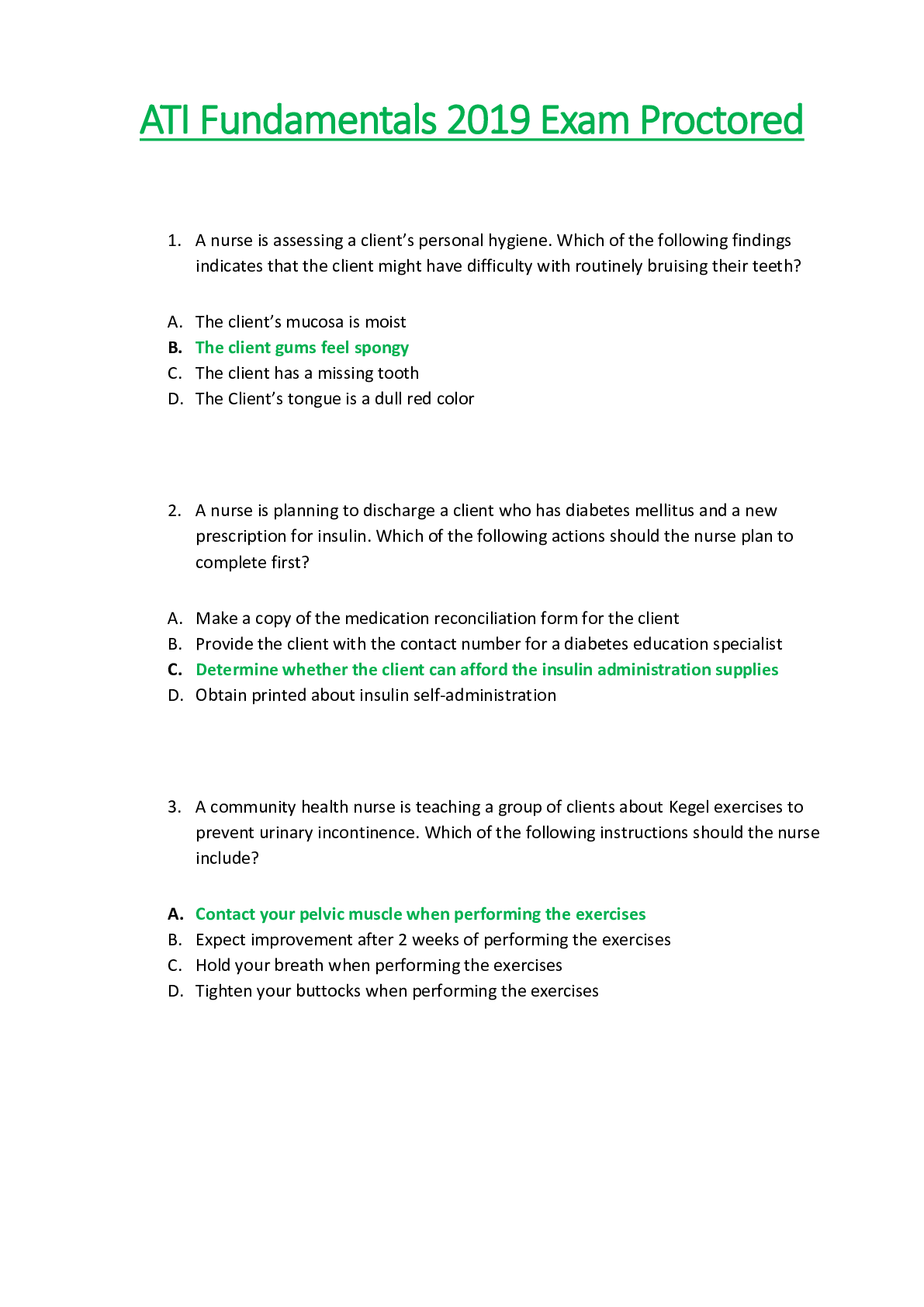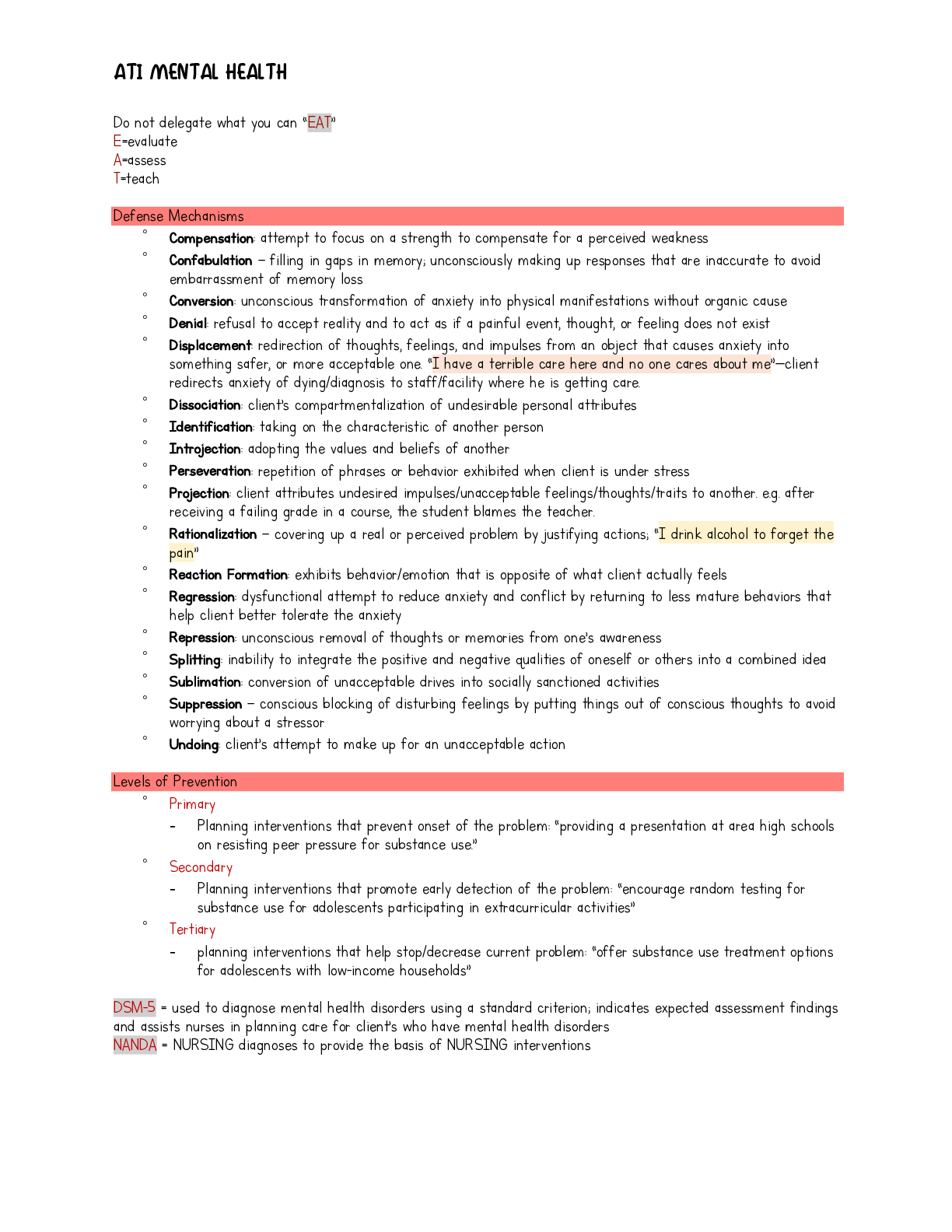*NURSING > EXAM PROCTORED > Pharm Test Bank 5th Ed (All)
Pharm Test Bank 5th Ed
Document Content and Description Below
1. A patient has coronary artery bypass graft surgery and is transported to the surgical intensive care unit at noon and is placed on mechanical ventilation. Interpret the initial arterial blood gas... levels pH: 7.31 PaCO2: 48 mm Hg Bicarbonate: 22 mEq/L PaO2: 115 mm Hg O2 saturation: 99% a. Normal arterial blood gas levels with a high oxygen level b. Partly compensated respiratory acidosis; normal oxygen c. Uncompensated metabolic acidosis with high oxygen levels d. Uncompensated respiratory acidosis; hyperoxygenated ANS: D The high PaO2 level reflects hyperoxygenation; the PaCO2 and pH levels show respiratory acidosis. The respiratory acidosis is uncompensated as indicated by a pH of 7.31 (acidosis) and a normal bicarbonate level. No metabolic compensation has occurred. DIF: Cognitive Level: Analyze/Analysis REF: Box 9-3 | Table 9-3 OBJ: Describe methods for assessing the respiratory system, including physical assessment, interpretation of arterial blood gases, and noninvasive techniques. TOP: Nursing Process Step: Assessment MSC: NCLEX Client Needs Category: Physiological Integrity 2. The provider orders the following mechanical ventilation settings for a patient who weighs 75 kg. The patient’s spontaneous respiratory rate is 22 breaths/min. Which arterial blood gas abnormality may occur if the patient continues to be tachypneic at these ventilator settings? Settings: Tidal volume: 600 mL (8 mL per kg) FiO2: 0.5 Respiratory rate: 14 breaths/min Mode assist/control Positive end-expiratory pressure: 10 cm H2O a. Metabolic acidosis b. Metabolic alkalosis c. Respiratory acidosis d. Respiratory alkalosis ANS: D Assist/control ventilation may result in respiratory alkalosis, especially when the patient is breathing at a higher rate that the ventilator rate. Each time the patient initiates a spontaneous breath—in this case 22 times per minute—the ventilator will deliver 600 mL of volume. DIF: Cognitive Level: Analyze/Analysis REF: p. 186 OBJ: Relate complications associated with mechanical ventilation. TOP: Nursing Process Step: Evaluation MSC: NCLEX Client Needs Category: Physiological Integrity 3. A patient’s ventilator settings are adjusted to treat hypoxemia. The fraction of inspired oxygen is increased from 0.6 to 0.7, and the positive end-expiratory pressure is increased from 10 to 15 cm H2O. Shortly after these adjustments, the nurse notes that the patient’s blood pressure drops from 120/76 mm Hg to 90/60 mm Hg. What is the most likely cause of this decrease in blood pressure? a. Decrease in cardiac output b. Hypovolemia c. Increase in venous return d. Oxygen toxicity ANS: A Positive end-expiratory pressure increases intrathoracic pressure and may result in decreased venous return. Cardiac output decreases as a result, and is reflected in the lower blood pressure. It is essential to assess the patient to identify optimal positive end-expiratory pressure—the highest amount that can be applied without compromising cardiac output. Although hypovolemia can result in a decrease in blood pressure, there is no indication that this patient has hypovolemia. As noted, higher levels of positive end-expiratory pressure may cause a decrease, not an increase, in venous return. Oxygen toxicity can occur in this case secondary to the high levels of oxygen needed to maintain gas exchange; however, oxygen toxicity is manifested in damage to the alveoli. DIF: Cognitive Level: Analyze/Analysis REF: p. 184 | p. 196 OBJ: Relate complications associated with mechanical ventilation. TOP: Nursing Process Step: Evaluation MSC: NCLEX Client Needs Category: Physiological Integrity 4. The nurse is caring for a patient with an endotracheal tube. The nurse understands that endotracheal suctioning is needed to facilitate removal of secretions and that the procedure a. decreases intracranial pressure. b. depresses the cough reflex. c. is done as indicated by patient assessment. d. is more effective if preceded by saline instillation. Suctioning is performed as indicated by patient assessment. Suctioning is associated with increases in intracranial pressure; therefore, it is important to hyperoxygenate the patient before suctioning to reduce this complication. Suctioning can stimulate the cough reflex rather than depress this reflex. Saline instillation is associated with negative physiological outcomes and is not recommended as part of the suctioning procedure; it does not loosen secretions, which is a common misperception. DIF: Cognitive Level: Understand/Comprehension REF: p. 180 OBJ: Discuss methods for maintaining an open airway. TOP: Nursing Process Step: Implementation MSC: NCLEX Client Needs Category: Physiological Integrity 5. A patient is admitted to the progressive care unit with a diagnosis of community-acquired pneumonia. The patient has a history of chronic obstructive pulmonary disease and diabetes. A set of arterial blood gases obtained on admission without supplemental oxygen shows pH 7.35; PaCO2 55 mm Hg; bicarbonate 30 mEq/L; PaO2 65 mm Hg. These blood gases reflect: a. hypoxemia and compensated metabolic alkalosis. b. hypoxemia and compensated respiratory acidosis. c. normal oxygenation and partly compensated metabolic alkalosis. d. normal oxygenation and uncompensated respiratory acidosis. The PaO2 of 65 mm Hg is lower than normal range (80 to 100 mm Hg), indicating hypoxemia. The high PaCO2 indicates respiratory acidosis. The elevated bicarbonate indicates metabolic alkalosis. Because the pH is normal, the underlying acid-base alteration is compensated. Given the patient’s history of chronic pulmonary disease and a pH that is at the lower end of normal range, it can be determined that this patient is hypoxemic with fully compensated respiratory acidosis. DIF: Cognitive Level: Analyze/Analysis REF: Table 9-3 | Box 9-3 OBJ: Describe methods for assessing the respiratory system, including physical assessment, interpretation of arterial blood gases, and noninvasive techniques. TOP: Nursing Process Step: Assessment MSC: NCLEX Client Needs Category: Physiological Integrity 6. A patient’s status worsens and needs mechanical ventilation. The pulmonologist wants the patient to receive 10 breaths/min from the ventilator but wants to encourage the patient to breathe spontaneously between the mechanical breaths at his own tidal volume. This mode of ventilation is called a. assist/control ventilation. b. controlled ventilation. c. intermittent mandatory ventilation. d. positive end-expiratory pressure. The intermittent mandatory ventilation mode allows the patient to breathe spontaneously between breaths. The patient will receive a preset tidal volume at a preset rate. Any additional breaths that he initiates will be at his spontaneous tidal volume, which will likely be lower than the ventilator breaths. In assist/control ventilation, spontaneous effort results in a preset tidal volume delivered by the ventilator. Spontaneous effort during controlled ventilation results in patient/ventilator dyssynchrony. Positive end-expiratory pressure (PEEP) is application of positive pressure to breaths delivered by the ventilator. PEEP is an adjunct to both intermittent mandatory and assist/control ventilation [Show More]
Last updated: 1 year ago
Preview 1 out of 86 pages

Reviews( 0 )
Document information
Connected school, study & course
About the document
Uploaded On
Jun 03, 2021
Number of pages
86
Written in
Additional information
This document has been written for:
Uploaded
Jun 03, 2021
Downloads
0
Views
23


.png)



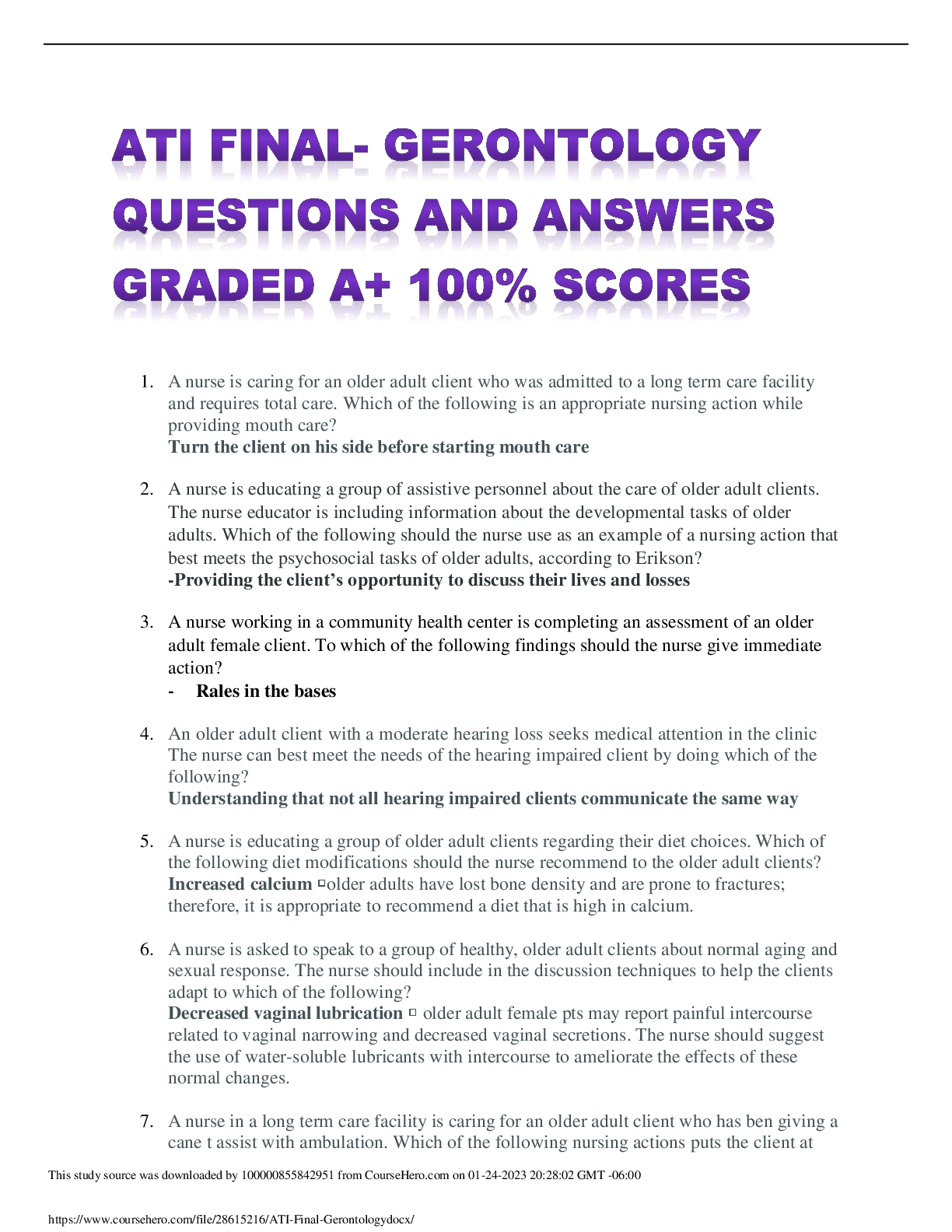
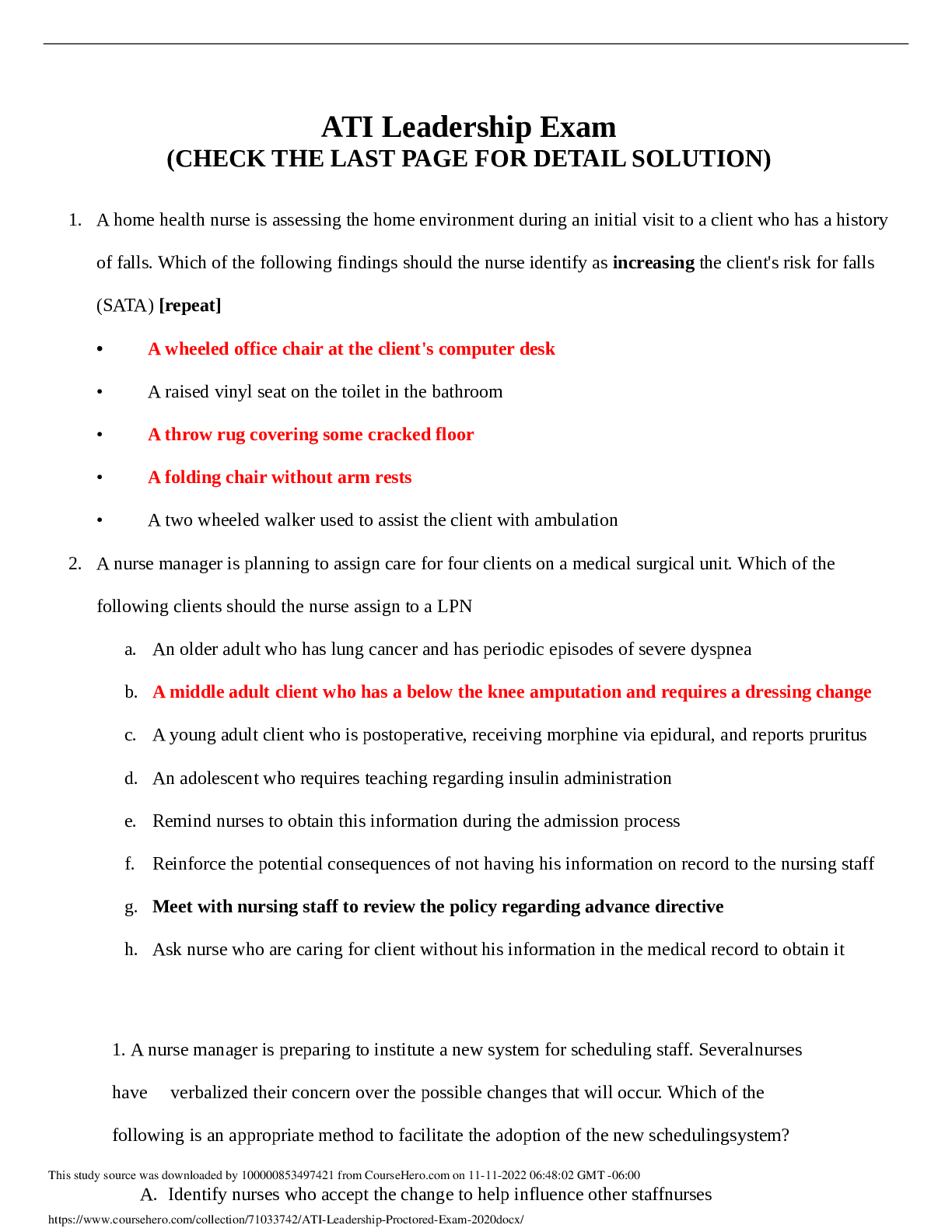
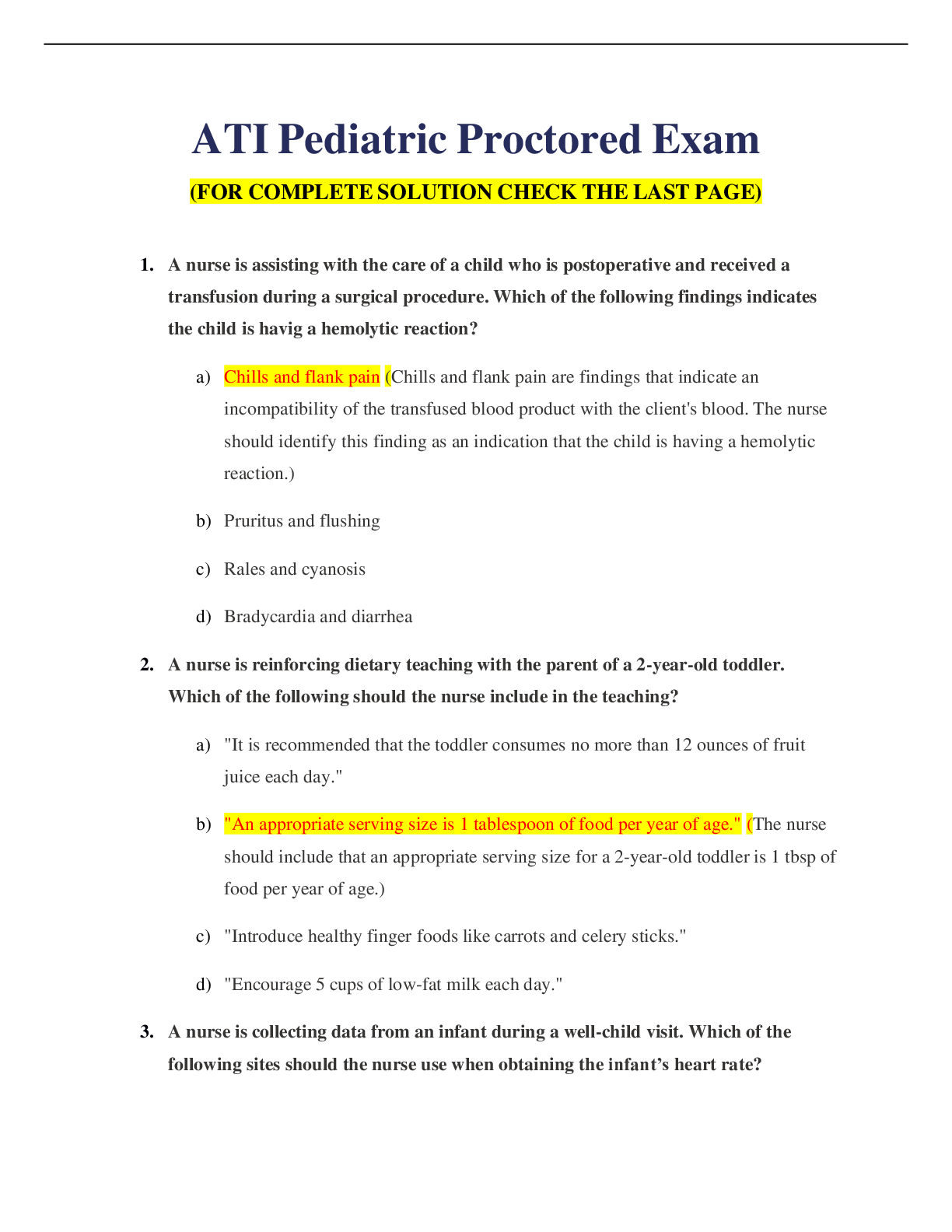
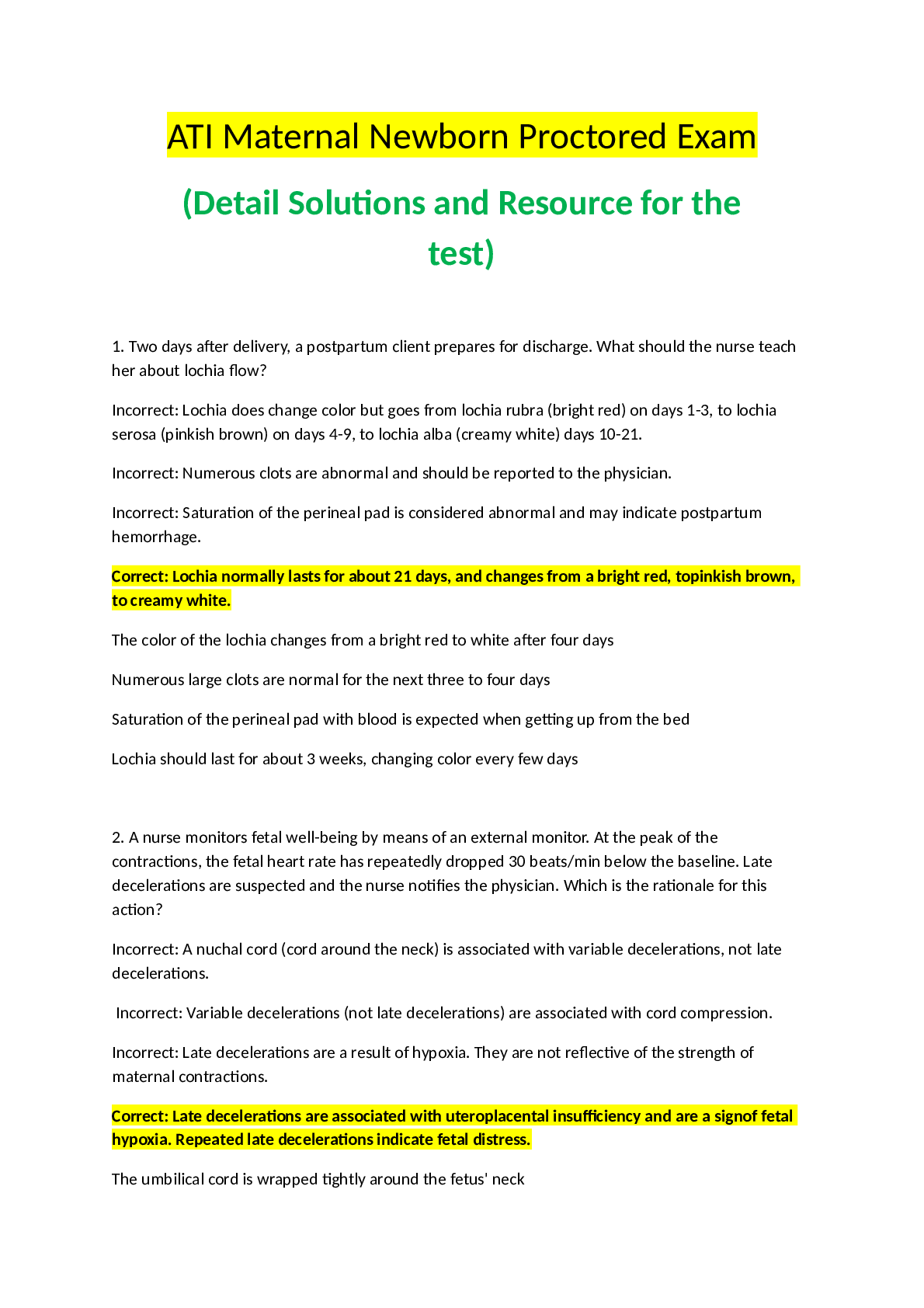
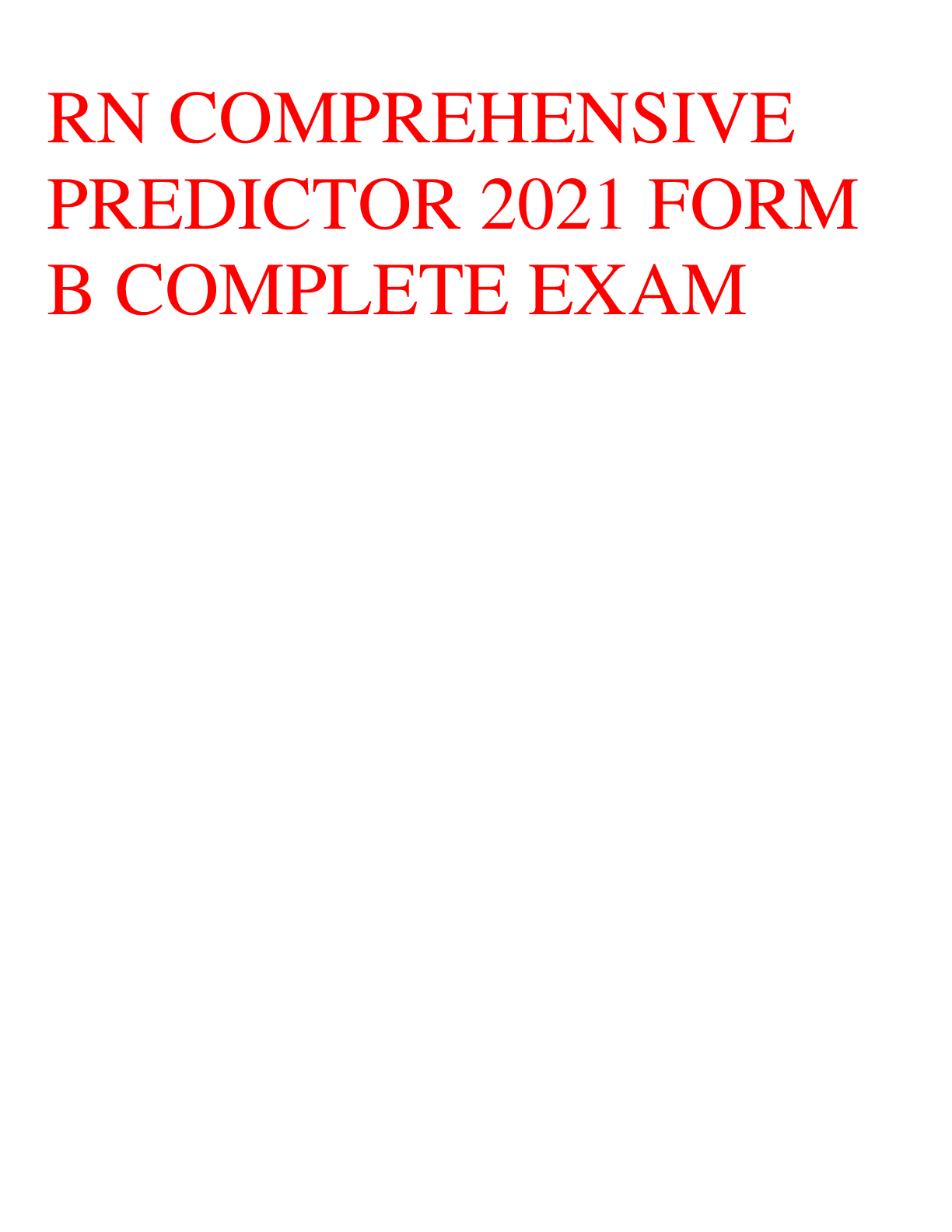

.png)
.png)





